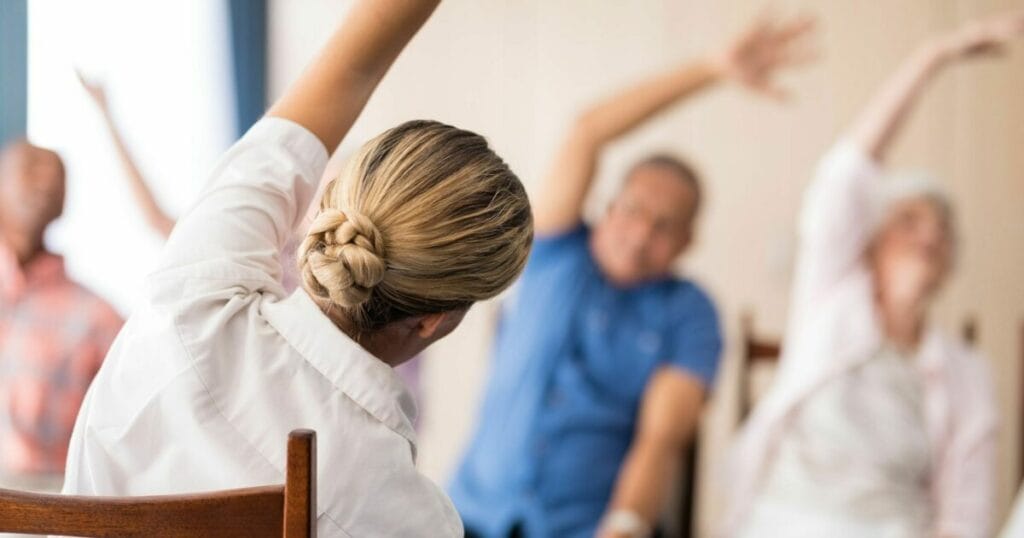


Stroke is a prevalent condition across the globe that has affected over 110 million people. In the United States, more than 795,000 people have a stroke each year, which incurred the country’s stroke-related costs amounting to almost $53 billion between 2017 and 2018. Strokes can result in death from cardiovascular diseases and are a leading cause of serious long-term disability. More than half of stroke survivors age 65 and older have reduced mobility from a stroke. Hence, rehabilitation activities for stroke survivors are important to help them recover and regain their movement.
In a recent study from the American Heart Association, the researchers examined the effects of a tailored sitting Tai Chi program on recovery outcomes among subacute stroke survivors. Their results supported that a tailored sitting Tai Chi program improves recovery outcomes among subacute stroke survivors. They also provided further knowledge to support the clinical implementation of such a program. This article will explore some of its crucial findings.
According to the Guidelines for the Early Management of Patients with Acute Ischemic Stroke from the American Heart Association/American Stroke Association, rehabilitation for stroke should begin within seven days after the stroke takes place and last for up to six months. However, because they are physically unstable or unable to utilize their arms completely, many stroke survivors choose to give up rehabilitation treatment.
The association also adds that flexibility and muscle strengthening exercises, such as yoga and Tai chi, have been shown to benefit stroke survivors by enhancing balance, life quality, and mental health while lowering their fear of falling, as stated in their Physical Activity and Exercise Recommendations for Stroke Survivors.
A set of slow, deliberate movements involving the hands, arms, neck, legs, and core are paired with deep breathing in Tai Chi, an ancient Chinese martial art. The unique aspect of the recent study is that it was designed for persons who had recently suffered from an ischemic stroke (blocked blood veins to the brain), hand and arm weakness, or partial paralysis.
The study sites were the two hospitals in Kunming, China, that practice traditional Chinese medicine. 160 persons who had their first ischemic stroke within six months of enrolling in the trial and were still able to use at least one arm were recruited by the researchers.
The participants were then divided into two groups:
During their hospital stay, the seated Tai Chi group members received individualized instruction from a Tai Chi teacher for one week. They then continued practicing at home three times a week for 11 weeks using a self-help video. On the other hand, the control group was given a self-guided workout video with typical activities to perform over 12 weeks at home. The at-home exercise was supervised for both study groups by family members and caretakers.
The researchers measured the participants’ physical function and psychological state through questionnaires and assessment tools at the beginning of the study and at four additional times during the 16-week program. The outcomes of the two groups were then compared.
After analyzing the questionnaires and assessment tools, the researchers found that:
Apart from improving mobility and life conditions for stroke survivors, sitting Tai chi is not just beneficial but also offers convenience since it can be done in the comforts of your home. It is also cost-efficient since it requires no special equipment or travel time.
The study results show that sitting Tai Chi can be a potential and effective alternative to improve balance, coordination, strength, and flexibility, especially for stroke survivors with hand and arm weakness or partial paralysis.
The American Heart Association stated that stroke is the fifth leading cause of death in the United States and a leading cause of long-term disability. Since it can limit one’s life activities and capacity to do things they usually enjoy – stroke may also compromise the quality of life and state of mind of a stroke survivor.
Hence, finding ways how to give them back their strength is very crucial. Programs like sitting Tai Chi pave the way to improve rehabilitation activities and produce great recovery outcomes at little to no cost.
Zhao, J., Chau, J. P., Chan, A. W., Meng, Q., Choi, K. C., Xiang, X., Zhao, Y., He, R., & Li, Q. (2022). Tailored sitting tai chi program for subacute stroke survivors: A randomized controlled trial. Stroke, 53(7), 2192–2203. https://doi.org/10.1161/strokeaha.121.036578